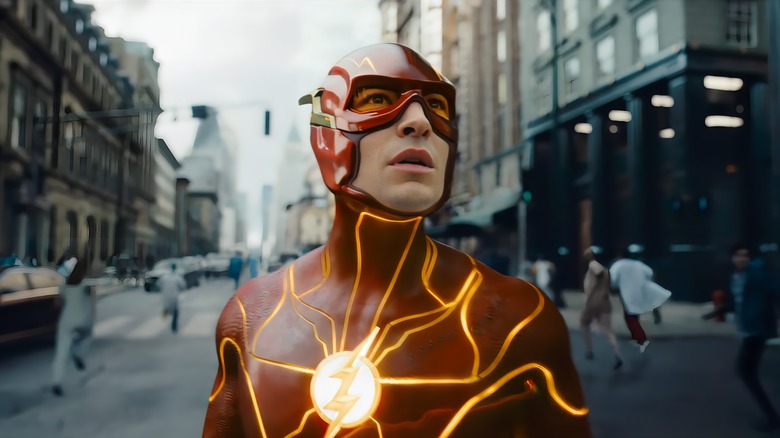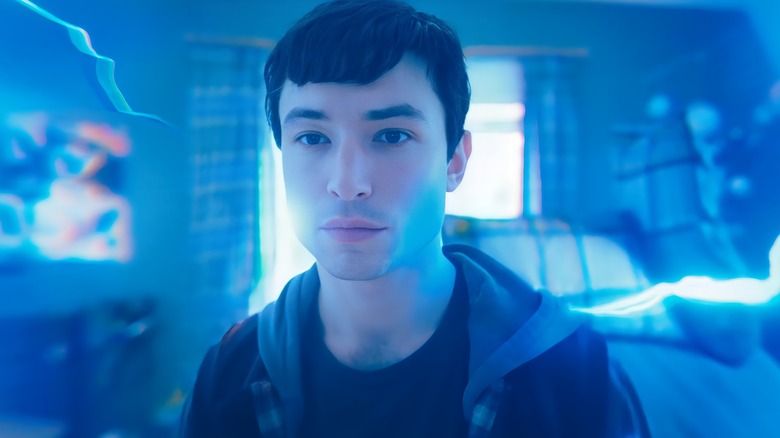The Flash's Speed Force Comes In Different Colors (But What Do They Mean?)
The DCEU has been anything but consistent, so many may have missed the small detail of "The Flash" changing Barry Allen's (Ezra Miller) lightning color for the movie. While he previously had blue, he now sports yellow lightning, while "other" Barry (also Miller) runs with blue. With different lightning colors now at play, some audience members could be confused.
In the comics, speedsters with different lightning colors is commonplace. Barry Allen typically sports yellow, Zoom has red, Godspeed has white, and the list goes on. Simply put, their colors are directly tied to how fast they are, with DC Comics taking inspiration from real-world science of speed, light, and blueshift. Red is the slower end of the visible light spectrum, while blue and indigo are the faster forms of visible light. Comic artist Brett Booth confirmed this on Twitter, saying that he picked blue for his run of "The Flash" because that Barry ran nearly at the speed of light.
So, in the comics, Barry generally has yellow lightning, putting him around the middle of the spectrum. Kid Flash's red lightning puts him on the slower end, while the original Wally West's blue lightning marks him as faster than Barry. Professor Zoom also has red, but he uses the redshift because he's the Reverse Flash, meaning his red is at the faster end of the spectrum. As for Godspeed? White isn't even on the spectrum, so that should tell you how powerful he is.
Does the DCEU Flash follow the comic book rules?
Given the inconsistent nature of the DCEU and Zack Snyder's tenure, it's hard to say if previous versions of The Flash have followed the same rules regarding the Speed Force and lightning colors.
When audiences were first introduced to Ezra Miller's Barry Allen, he left a trail of blue lightning wherever he ran. According to the comics, this would put him on the right side of the light spectrum, making him incredibly fast. However, this version of Barry only recently got his powers, and still hasn't fully become The Flash yet, so how could he already have such immense speed? Snyder once said Barry's lightning was actually yellow, and any blue that audiences saw were just accents, but it's safe to say Miller's Flash has blue lightning.
In "The Flash" movie, however, Barry suddenly has his original comic-book yellow lightning and (in a very DCEU move) fans haven't received any explanation. Making matters more confusing, "The Flash" introduces another version of Barry, who has the blue lightning the original Barry had.
Perhaps "The Flash" movie uses the multiverse as an easy scapegoat to get around this possible paradox; perhaps it doesn't address it at all. Either way, die-hard fans will be watching such details closely when "The Flash" hits theaters June 16th.

